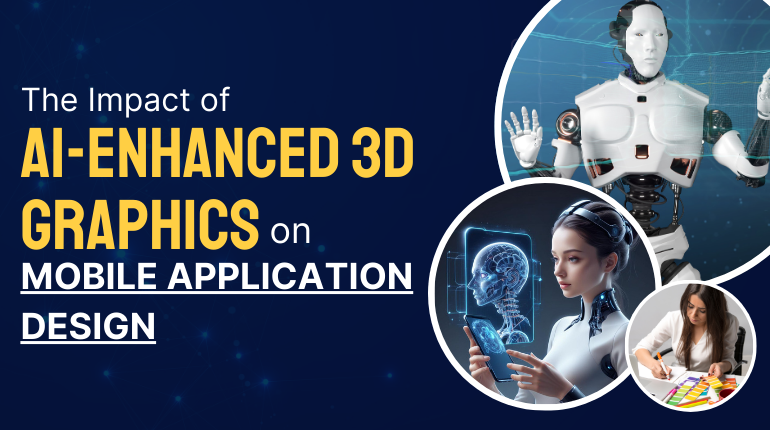The integration of artificial intelligence (AI) with 3D graphics is revolutionizing the landscape of mobile application design. This article explores the significant impact AI has on mobile app design and how AI-powered 3D graphics are shaping the future.
What Are AI-Powered 3D Graphics?
- AI-powered 3D graphics leverage artificial intelligence to create, generate, and enhance 3D visual outputs. This combination allows for the design and rendering of more dynamic and realistic digital environments. AI-driven methods, such as deep learning, can transform ideas into specific, immersive settings.
- One fundamental application of AI is improving ray-tracing techniques. AI enhances lighting, shadows, and reflections, resulting in more realistic digital graphics. Additionally, AI contributes to animation and character design, enabling lifelike human movements and adding realism and energy to animations.
- Prominent companies like Autodesk and Adobe have incorporated AI technologies to refine their 3D designs, enhancing precision and speeding up the design process.
Improving User Engagement
- AI-enhanced 3D graphics significantly boost the user experience and interaction. By integrating augmented reality (AR), apps can provide better and more engaging content, leading to increased user interaction and longer engagement times. For instance, AR and 3D models in retail apps have enhanced user interaction by allowing virtual try-ons, leading to higher conversion rates.
- Apps like Pokémon Go illustrate how AI-driven 3D graphics can enrich user engagement by blending virtual elements with real-world environments, creating a more immersive experience.
Real-Time Rendering and Optimization
A key challenge in mobile app development is optimizing 3D graphics for real-time rendering on devices with limited resources. AI algorithms address this by dynamically adjusting detail levels and resource allocation based on the device’s performance, enhancing both visual quality and application responsiveness.
Simplifying 3D Content Creation
Creating high-quality 3D content traditionally requires significant time and resources. AI-powered tools can automate tasks such as 3D modeling, scripting, and animation, streamlining the process and enabling small teams to compete effectively with larger companies. AI can also generate realistic 3D models from 2D images and improve textures, making content creation more efficient.
Enhanced Interactivity and User Engagement
AI-enhanced 3D graphics improve accessibility and interactivity within mobile apps. AI enables the creation of responsive 3D environments that adapt in real-time to user actions. In gaming apps, AI can create intelligent non-player characters (NPCs) that offer meaningful interactions. In educational apps, AI-driven 3D models provide interactive learning experiences that adapt to user progress and preferences, enhancing engagement and learning outcomes.
Future Opportunities
As AI and 3D graphics technology continue to evolve, mobile app design is set to benefit from even more advanced and immersive experiences. Virtual reality (VR) and augmented reality (AR) applications will particularly benefit from these advancements, offering users unprecedented levels of immersion and interactivity.
Conclusion
The integration of AI and 3D graphics is transforming mobile app design, leading to more immersive experiences, improved user engagement, and streamlined development processes. As AI technology progresses, we can anticipate further innovations in mobile app design, pushing the boundaries of what’s possible.
Ready to revolutionize your mobile app with cutting-edge AI and 3D graphics? Partner with XcelTec today!
 :
https://xceltec.com/
:
https://xceltec.com/

